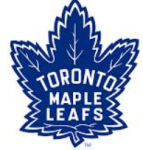 The story of the Harold Ballard curse:
The story of the Harold Ballard curse:
The “Harold Ballard curse” is a popular, albeit superstitious, explanation for the Toronto Maple Leafs’ lengthy Stanley Cup drought, which stretches back to 1967. This perceived curse is attributed to the tumultuous and often controversial ownership of Harold Ballard, who controlled the team from 1972 until his death in 1990.
Ballard, who gained full control of the Maple Leafs in 1972 after a series of shrewd business maneuvers, was a figure known for his eccentricities, outspoken nature, and, most significantly for the team’s performance, his extreme frugality. While the Maple Leafs had a strong history before his tenure, winning 13 Stanley Cups between 1918 and 1967, their fortunes declined dramatically under his ownership.
Critics argue that Ballard prioritized profits from Maple Leaf Gardens over investing in the hockey team itself. He was notorious for his refusal to spend money on top-tier players, often trading away talented individuals for less capable or less expensive alternatives. A prime example often cited is the trade of star forward Darryl Sittler to the Philadelphia Flyers in 1982. Ballard’s strained relationships with players, whom he often publicly criticized and refused to pay competitively, further contributed to a negative team environment. This penny-pinching approach made it difficult for the team to attract and retain high-caliber talent needed to compete for a championship.
Furthermore, Ballard’s erratic management style, which included frequent coaching changes and unpredictable decisions, fostered instability within the organization. His public feuds with popular figures associated with the team and his often-abrasive interactions with the media alienated fans and created a constant sense of turmoil surrounding the franchise.
The idea of a “curse” gained traction as the Maple Leafs consistently underperformed during Ballard’s ownership, failing to even reach the Stanley Cup Finals. After his death in 1990, many fans hoped that the supposed curse would be lifted. While the team has seen periods of greater competitiveness since then, including reaching the Western Conference Finals in 1993 and the Eastern Conference Finals in 1999 and 2002, the Stanley Cup has remained elusive.
Whether a genuine curse or simply the long-term consequences of poor management, the narrative of the “Harold Ballard curse” persists among Maple Leafs fans as a way to explain the team’s decades-long championship drought following a period of significant success. It serves as a potent symbol of a turbulent era in the team’s history and the enduring frustration of a passionate fanbase yearning for a return to glory.
_________










